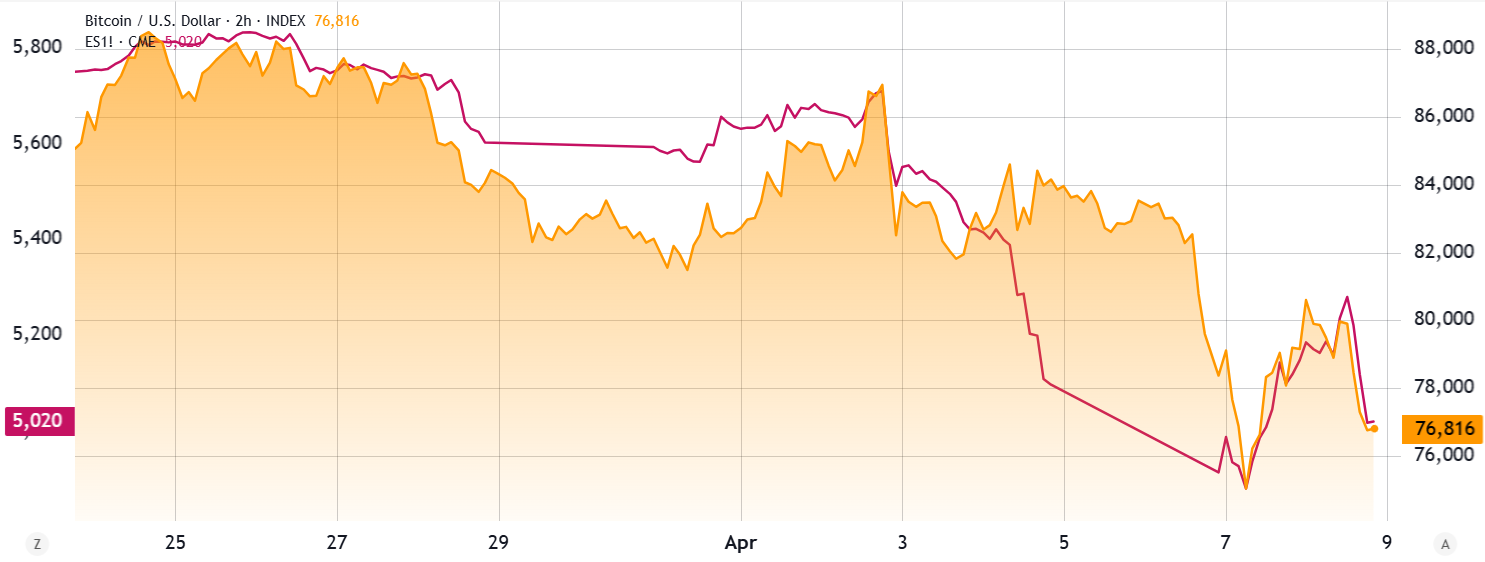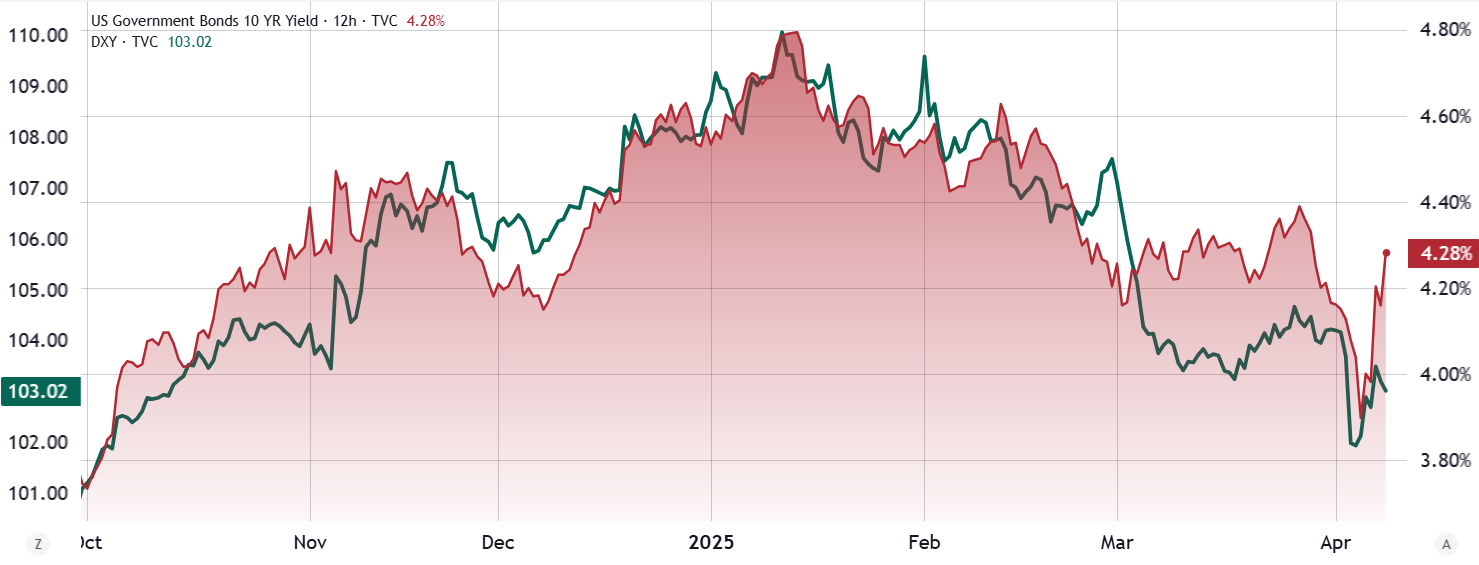Traders in both crypto and equities were optimistic about a last-minute resolution that could avert the US from implementing a 104% tariff on Chinese imports; however, the White House confirmed in a press briefing that the tariffs would take effect on April 9. The markets declined sharply after Peter Navarro, a trade advisor to President Trump, declared that tariffs were “not a negotiation.”
As a result, the S&P 500 index finished on April 8 with a 1.6% decrease, wiping out previous gains of 4%. This decline has left many wondering whether Bitcoin (BTC) can recover its bullish trend amid deteriorating macroeconomic conditions.
Persistent US debt issues may create space for Bitcoin growth
The S&P 500 index fell by 14.7% between April 2 and April 7, instilling fear among Bitcoin investors and forcing a retreat to the $75,000 level—its lowest in over five months.

S&P 500 futures (left) vs. Bitcoin/USD (right).
During a joint appearance with Israeli Prime Minister Benjamin Netanyahu on April 7, President Trump reportedly expressed his desire to “reset the table” on trade, noting that “there can be permanent tariffs, and there could also be negotiations because there are essential matters beyond tariffs.” Amid this uncertainty, initial public offerings and mergers have been postponed, and leveraged loan deals along with bond issuances have faced delays, as reported.
It appears that the stock market might rebound if the risks of a trade war diminish. Economists have warned that tariffs could lead to inflation and significantly heighten the likelihood of an economic downturn. However, assessing how this will affect Bitcoin’s price proves to be complicated, as some investors view the cryptocurrency’s immutable monetary system as a hedge against the ongoing expansion of global fiat currencies.
Short-term ties could be detrimental to BTC, but prospective interest rate cuts may shift the trend
In the near term, the correlation between Bitcoin and equity markets is expected to remain strong. Nevertheless, the fiscal troubles facing the US government could provide an opportunity for Bitcoin’s value to rise. On April 8, the yield on the US 10-year Treasury climbed to 4.28%, rebounding from a brief dip to 3.90% on April 7, indicating that investors are seeking higher returns on these securities.

US Dollar Index (DXY, left) vs. US 10-year Treasury yield (right).
The escalating costs linked to refinancing the $9 trillion in federal debt maturing within the next year are likely to exacerbate fiscal imbalances and weaken the US dollar. The US Dollar Index (DXY) has diverged from US Treasury yields, dropping to 103.0 on April 8 from 104.2 on March 31. This development may help support Bitcoin’s value, a sentiment echoed by BlackRock’s CEO in a recent letter to investors.
Related: A weaker yuan could favor BTC as Chinese capital moves toward crypto — Bybit CEO
Michael Gapen, the chief US economist at Morgan Stanley, remarked in a client note on April 8: “We believe the appropriate course for the Fed is to remain in its current position for an extended period,” as noted. According to Morgan Stanley’s revised predictions, the US Federal Reserve is projected to keep interest rates at 4.25%-4.50% until March 2026, emphasizing that “only a recession would alter this scenario” and that “a recession could prompt earlier and larger initial cuts.”
Bitcoin’s momentum could shift positively as traders come to realize that the US Federal Reserve has limited options to avert a recession without inciting inflation. While the exact timing of a rally remains uncertain, prolonged delays in addressing trade conflict issues may steer investors toward scarce assets like Bitcoin, especially in light of worries about possible devaluation of the US dollar.
This article serves solely for general informational purposes and is not intended as legal or investment advice. The perspectives and opinions expressed herein are solely those of the author and do not necessarily reflect or represent the views or opinions of any entity.
